William L. Pressly

Professor Emeritus, Eighteenth- and Nineteenth-Century European Art, Art History and Archaeology
Education
Ph.D., , Institute of Fine Arts of New York University
Research Expertise
Early Modern Studies
William L. Pressly's scholarship is devoted to the art of eighteenth- and nineteenth-century Europe, with an emphasis on British painting. His numerous publications include three single-authored books on the eighteenth-century Irish painter James Barry. He has also published on a number of other artists of the "English" School, including William Blake, John Singleton Copley, Henry Fuseli, James Gillray, James Jefferys, John Hamilton Mortimer, Samuel Palmer, John Francis Rigaud, George Romney, Alexander and John Runciman, Gilbert Stuart, J. M. W. Turner, Benjamin West, Joseph Wright of Derby and Johan Zoffany.Outside of British art, he has pubished on Goya and the Surrealists. His most recent book, James Barry's Murals at the Royal Society of Arts: Envisioning a New Public Art (Cork University Press, 2014) is the first to offer an in-depth anaylsis of these remarkable paintings and the first to demonstrate that the artist was pioneering a new approach to public art in terms of the novelty of his patronage and the highly personal nature of his content. The book arguesthat the murals contain a deeper hidden meaning that has gone unperceived for 230 years, the artist having disguised his message due to its inflammatory nature. It was awarded the 2015 William MB Berger Prize for British Art History.
Professor Pressly has held grants from the National Endowment for the Humanities, the Guggenheim Foundation, the Institute for Advanced Study, Princeton, the Paul Mellon Centre for Studies in British Art, London, and Senior Smithsonian Fellowship. Before joining the Maryland faculty in 1987, he had taught at Yale University, the University of Texas at Austin, and Duke University. At Maryland, heserved as Director of Graduate Studies and Chair of the Department of Art History and Archaeology.Since 2012 he and his wife Nancy have beenliving in Atlanta,just one and a half blocks from their son and two grandchildren.
Publications
America's Paper Money: A Canvas for an Emerging Nation
Professor Emeritus William Pressly charts the history of paper money in the United States and its role in forging a national identity
Author/Lead: William L. PresslyFunding Agency:
Smithsonian Institution, Smithsonian American Art Museum
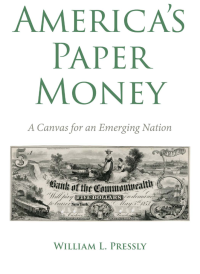
The Massachusetts Bay Colony in 1690 became the first government in the Western world to print paper money, the imagery for which initiated an indigenous American art form of remarkable dynamism and originality. After the Revolutionary War, disillusioned by how quickly its promiscuous printing of Continental currency had led to hyperinflation, the U.S. government left it to private institutions such as state-chartered banks to carry on this artistic American tradition. Adorned with a vast variety of images, bank notes soon became the fledgling country’s primary currency. With pressures of the Civil War, the federal government in 1861 began taking charge of the paper-money supply by creating a national currency; simultaneously, the Confederate States of America was creating a competing self-image, making heavy use of bank-note vignettes. Later, collaboration between government engravers and well-known artists on the 1896 Silver Certificates marked the apex of U.S. government currency design. For two centuries, American creativity and technical ingenuity resulted in imagery on paper money that helped create and enhance the nation’s imagined self.
Read More about America's Paper Money: A Canvas for an Emerging Nation
James Barry's Murals at the Royal Society of Arts: Envisioning a New Public Art
James Barry's Murals at the Royal Society of Arts is the first to offer an in-depth analysis of these remarkable paintings and the first to demonstrate that the artist was pioneering a new approach to public art in terms of the novelty of the patronage a
Author/Lead: William L. Pressly
Read More about James Barry's Murals at the Royal Society of Arts: Envisioning a New Public Art
The Artist as Original Genius: Shakespeare's “Fine Frenzy” in Late-Eighteenth-Century British Art
This book examines the first generation of artists in Britain to define themselves as history painters, and their perception of the work and person of William Shakespeare
Author/Lead: William L. Pressly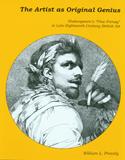
The French Revolution as Blasphemy: Johan Zoffany's Paintings of the Massacre at Paris, August 10, 1792
Art historians will find Pressly's on two paintingsby Johann Zoffany to be of immense value, as will cultural historians interested in religion, gender, and race.
Author/Lead: William L. Pressly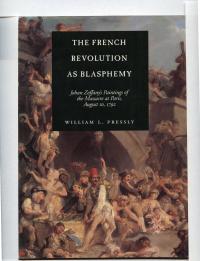
A Catalogue of Paintings in the Folger Shakespeare Library: "As Imagination Bodies Forth"
This catalogue forms an essential chapter in the history of the development of literary painting and of Shakespearean criticism, in changes in approach to stagecraft, and in the evolution of Shakespeare portraiture.
Author/Lead: William L. Pressly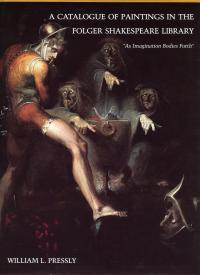
James Barry: the Artist as Hero
Catalogue of an exhibition from February 9 to March 20, 1983.
Author/Lead: William L. Pressly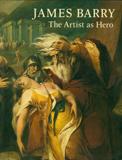
The Life and Art of James Barry
A monographic study of the life and art of James Barry, one of Britain's most important painters but who was born in Ireland
Author/Lead: William L. Pressly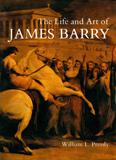
This book is the first modern study of James Barry, the finest of all painters working in Britain in the "grand manner." Born in Cork, Ireland, Barry settles in London in 1771 after five years of study in France and Italy financed by Edmund Burke. He was elected to the Royal Academy in 1773 and appointed professor of painting nine years later. In 1799, however, after fiercely denouncing its policies, he became the first and only artist to be expelled from the Academy. His paintings include several that rank with the nest contemporary work, and his murals at the Royal Society of Arts form perhaps the most important cycle of history paintings in Great Britain.

